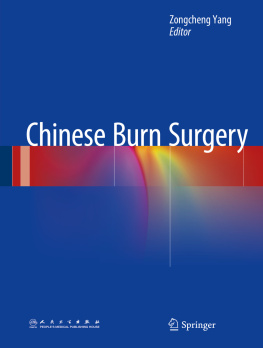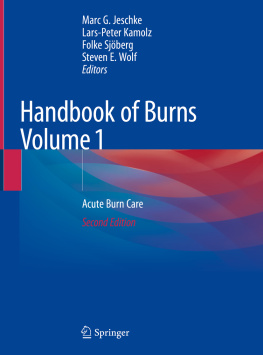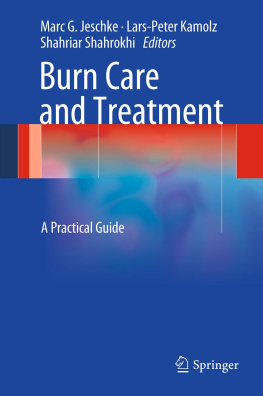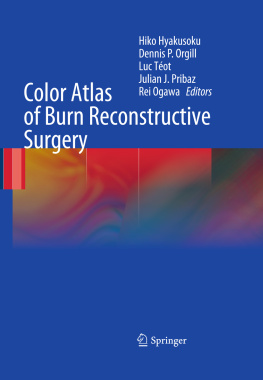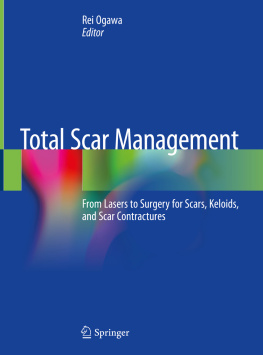1. Development of Burn Medicine in China
Belonging to general surgery, burns did not become a specialty until World War II. The attack of atomic bombs over the Japanese cities of Hiroshima and Nagasaki resulted in tens of thousands of burned casualties in an instant, which attracted worldwide attention to burns with the first Burns Center established by the US army. Whereas in China, people only started to attach importance to burns during the Korean War when the US troops used enormous incendiary weapons that led to an increasing incidence of burns in the Chinese volunteer forces, so that more and more training courses for burns and plastic surgery were organized. In 1952, the Academy of Military Medical Sciences set up Burns Research Team. In 1957, Second Military Medical University and Academy of Military Medical Sciences cofounded Emergency Surgical Hospital with a Burns Unit. The period of the Great Leap Forward in 1958 saw many severely burned patients. In August 1958, Shanghai Guang Ci Hospital accomplished the worlds first successful rescue for a patient with over 80 % of burned area and set up a burns treatment unit. Soon after various provincial and municipal hospitals, military universities, General Hospital and Military General Hospital all established burns wards. Thus, China started extensive and profound research on burns and launched the construction of Burns Medical Science, leading to rapid improvement in burns prevention and treatment. In December 1958 and in January 1959, the State Ministry of Health and the Health Bureau of PLA General Logistics Department convened field meetings of experience exchanges in which burns treatment protocols were drawn up. In 1962, the Burns Professional Team of CPLA was established with Third Military Medical University as the leading unit. Since then, Army Conferences on Burns have been held every 2 years except for the period of the Cultural Revolution. Till now 20 such conferences have been organized and have played a promoting role in the development of burns research in China. By the beginning of the 1980s, the level of burns prevention and treatment in China had significantly improved over 20 years of endeavor. As many burns specialists had been trained and quite a few high-level bases for burns prevention and treatment had been set up, it won a great reputation within the medical fields in China and had a considerable impact among the international peers. The senior experts in burns area, such as Shi Jixiang and Li Ao, suggested that we should initiate Burns Associations and start publications in order to further advance the academic study. In 1982, the experts from Shanghai Ruijin Hospital; Second, Third, and Fourth Military Medical Universities; PLA General Hospital; and Jishuitan Hospital made a joint proposal for the establishment of Burns Association. In 1983, Burns Group of Surgery Society of Chinese Medical Association was founded in Shanghai upon the approval of the State Ministry of Health and Chinese Medical Association. In 1986, Burns Society of Chinese Medical Association was established in Tianjin upon the approval of China Association for Science and Technology and Chinese Medical Association. These facilitated the organization of academic exchanges and the promotion of academic development, so that the system of burns treatment gradually formed a network, which in turn played a critical role in the rescue for emergent events and the treatment for mass burned casualties.
In China, various academic activities have been persistently held for a rather long time, but few exchanges of students with foreign countries had been made until the end of the Cultural Revolution. In 1971, in behalf of China, Wang Changye from Beijing Jishuitan Hospital and Fang Chunhui from Beijing Medical College were invited to attend the Convention of International Surgical Society in Romania and gave a speech on the conclusive reports of the ten cases with over 90 % of burned area and over 70 % at third degree cured in Shanghai Ruijin Hospital, Third Military Medical University, Jishuitan Hospital, and PLA General Hospital. The report was highly considered by the foreign peers in the convention and the long-term closed state that lacked contacts with international peers was changed. Since 1978 when China started the policy of reform and opening up, the international exchanges in burns discipline have also been enhanced. In June 1981, Shanghai Ruijin Hospital successfully held the 1st International Symposium on Burns. In October 1985, Third Military Hospital held the 1st China-US International Conference on Burns with 100 odd participants from more than ten countries including the USA, the UK, France, Italy, Russia, Japan, Turkey, Yugoslavia, and India; since then this conference has been held every 4 years. In 1996, China-Japan International Conference on Infections was held in Chongqing. In 1998, China-Japan International Conference on Burns was held in Beijing. In 1998, International Symposium on Electric Burns was held in Shanghai. Meanwhile, after the 1980s, personnel working in burns field also went abroad to participate in international conferences on burns and the related professions, so a considerable number of young and middle-aged burns specialists have the experience of overseas study or visit. Also, many foreign burns experts came to China to visit, give lectures, or carry out international collaborative research. This gradually fostered each others understanding and friendship and the foreign peers started to appreciate the achievements made by China in burns. In 1988, Shi Jixiang was conferred with Evans Award that is specifically given away by American Burn Association to foreign outstanding burns experts. In 1994, Li Ao became the recipient of Evans Award, too.
In 1985, Chinese Journal of Burns and Plastic Surgery was initiated as advocated by the plastic surgery experts Song Ruyao and Li Ao, and Song Ruyao was assigned as chief editor. In 2000, burn surgery was separated from plastic surgery in the journal and was renamed as Chinese Journal of Burns with Xiao Guangxia as chief editor. This journal has made great contributions to the development of burns discipline.
In China, a comprehensive and a systematic study of burns prevention and treatment was started from 1958. Different levels of burns units were established afterward, including burn institute, burn center, burn division and burn treatment group; almost all of the major hospitals, affiliated hospitals of medical colleges, and some grass-roots hospitals started to carry out burns treatment practices and relevant research, forming a network of burns treatment. A number of burns treatment bases that had remarkable influence on both domestic and foreign related fields were established. For instance, Burn Institute of Third Military Medical University and that of Second Military Medical University were successively listed as the national key units of universities; the former was also listed as a state key laboratory. A number of burns institutes and key laboratories were founded in the army and in many provinces and cities, which became burns treatment centers and/or research bases. After 50 years of efforts, a large number of burns specialists who have profound professional knowledge, excellent therapeutical skills, and noble occupational ethics were trained. Li Ao, Sheng Zhiyong, and Fu Xiaobing were sequentially elected as Academicians of Chinese Academy of Engineering. At present, some senior experts who have been fighting against burns for more than 40 years are still making every endeavor for the development of this field; furthermore, many very talented young and middle-aged academic leaders have already emerged.

